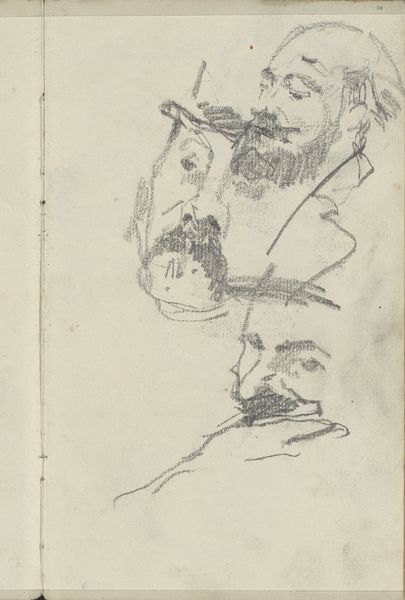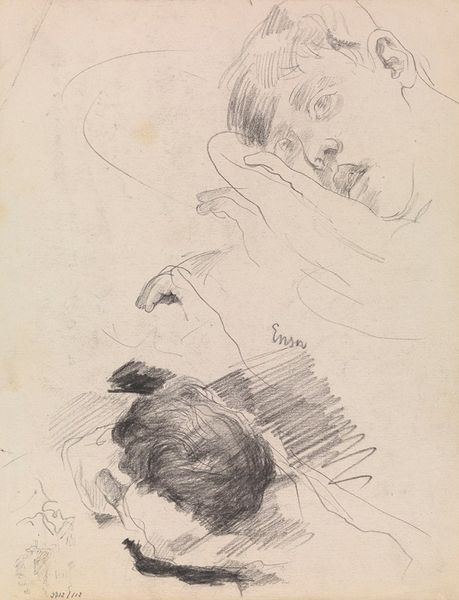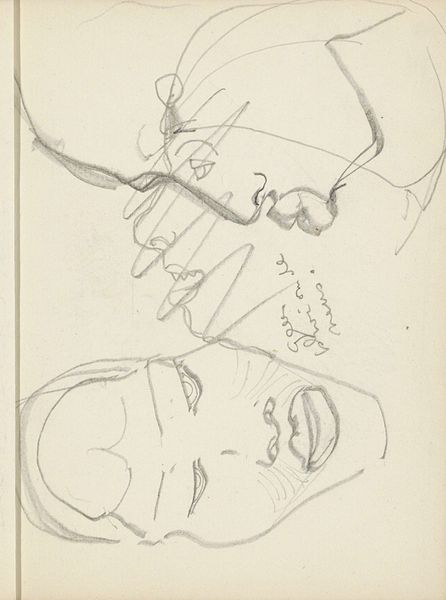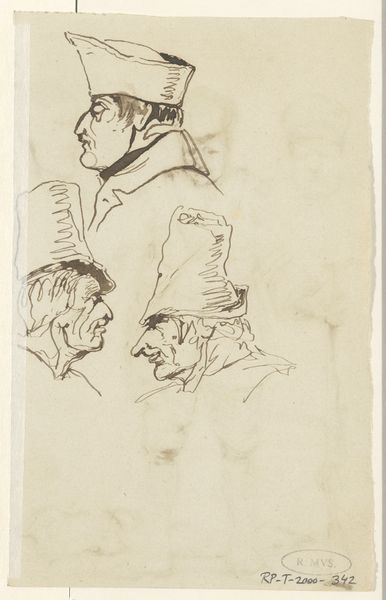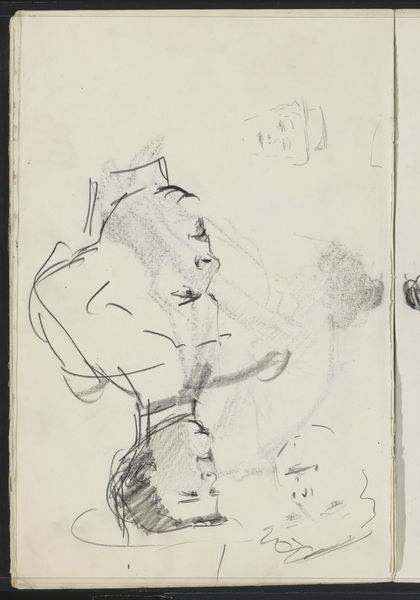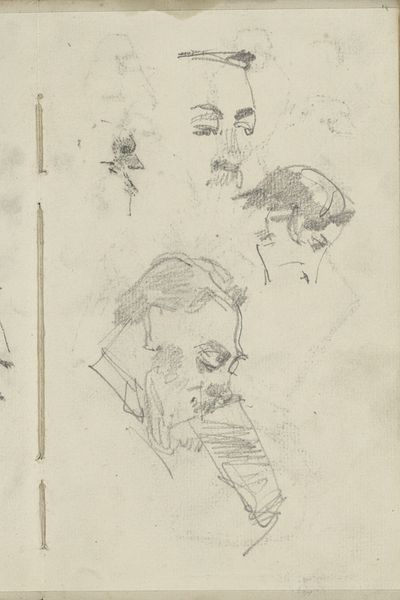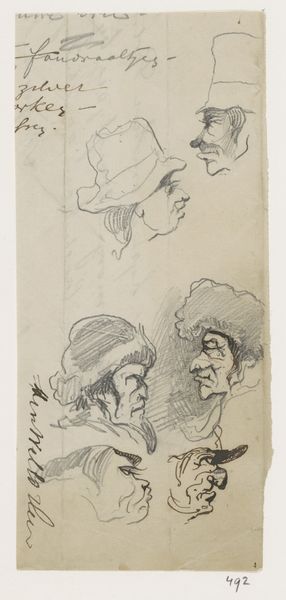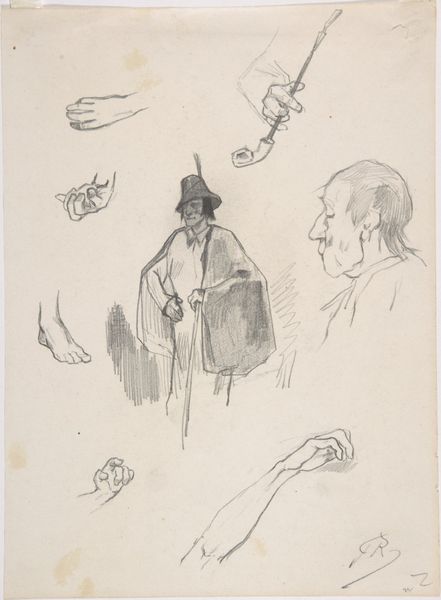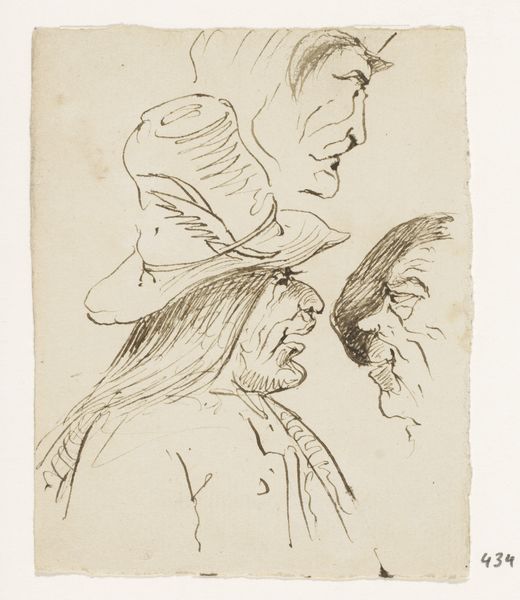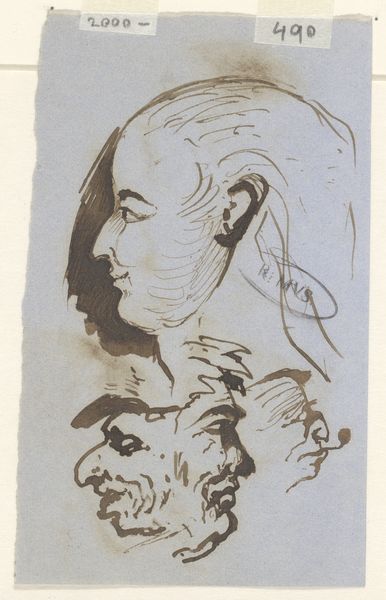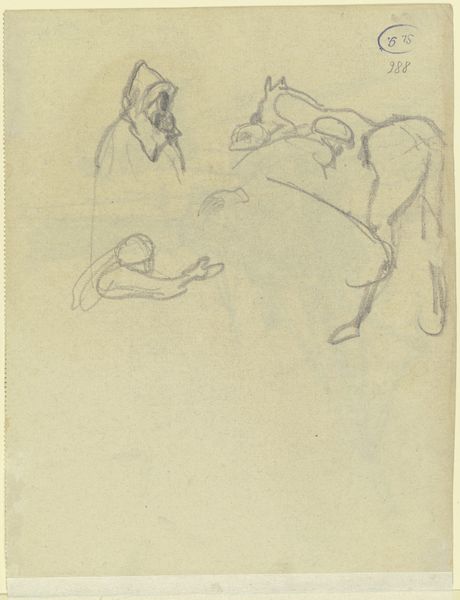
Sketches of Six Heads in Profile (caricatures?) (recto); Sketch of Head and Blank Rectangle (verso) 1833 - 1898
0:00
0:00
drawing, pencil, graphite
#
portrait
#
drawing
#
caricature
#
pencil
#
graphite
#
profile
Dimensions: sheet: 10 3/4 x 6 15/16 in. (27.3 x 17.6 cm)
Copyright: Public Domain
Curator: My first impression of these faces is their stark simplicity. There’s a roughness to them. Editor: This work, "Sketches of Six Heads in Profile (caricatures?) (recto); Sketch of Head and Blank Rectangle (verso)," is a pencil and graphite drawing by Félicien Rops. It resides here at the Metropolitan Museum of Art. Though the exact year is unknown, it’s estimated to be created between 1833 and 1898. Curator: The rapid, almost frenetic, strokes really amplify the caricature aspect. These aren’t idealized portraits; they feel like quick jabs at societal figures. You can tell he's skewering recognizable personalities, mocking specific power structures and perceived arrogance. Editor: Indeed. The nineteenth century saw caricature used extensively for political and social critique, didn’t it? Rops was working at a time of rapid societal change and political upheaval, particularly in Belgium and France. These caricatures are indicative of the increasing role that popular imagery was taking on. There's an element of public discourse embedded into this seemingly private practice of quick sketches. The art-buying public also had less capital. Graphite and pencils were very practical ways for artists to work during that time, as well. Curator: Absolutely. I think it is interesting how they each have unique physiognomies and social commentary on masculinity. Some appear overtly sinister, whilst others border on ridiculous. This interplay is such a telling indicator of his world view, of gender performativity during his time and place, of shifting cultural values, all captured through deceptively simple lines. Editor: Do you think this could speak to the emergence of modern celebrity? With these quickly rendered drawings potentially circulating in the media of that era? Curator: A brilliant observation. Before widespread photography, this might be how many saw representations of notable figures, impacting their perception. Editor: Considering that public reception is part of an artwork's overall legacy, then, this makes the set a testament to Rops' understanding of how imagery can shape perceptions of power, identity, and social commentary in nineteenth-century culture. Curator: Indeed. This has given me an altogether fresh perspective to its intersectional critique of social roles and status. Editor: I see it now. Thank you.
Comments
No comments
Be the first to comment and join the conversation on the ultimate creative platform.

